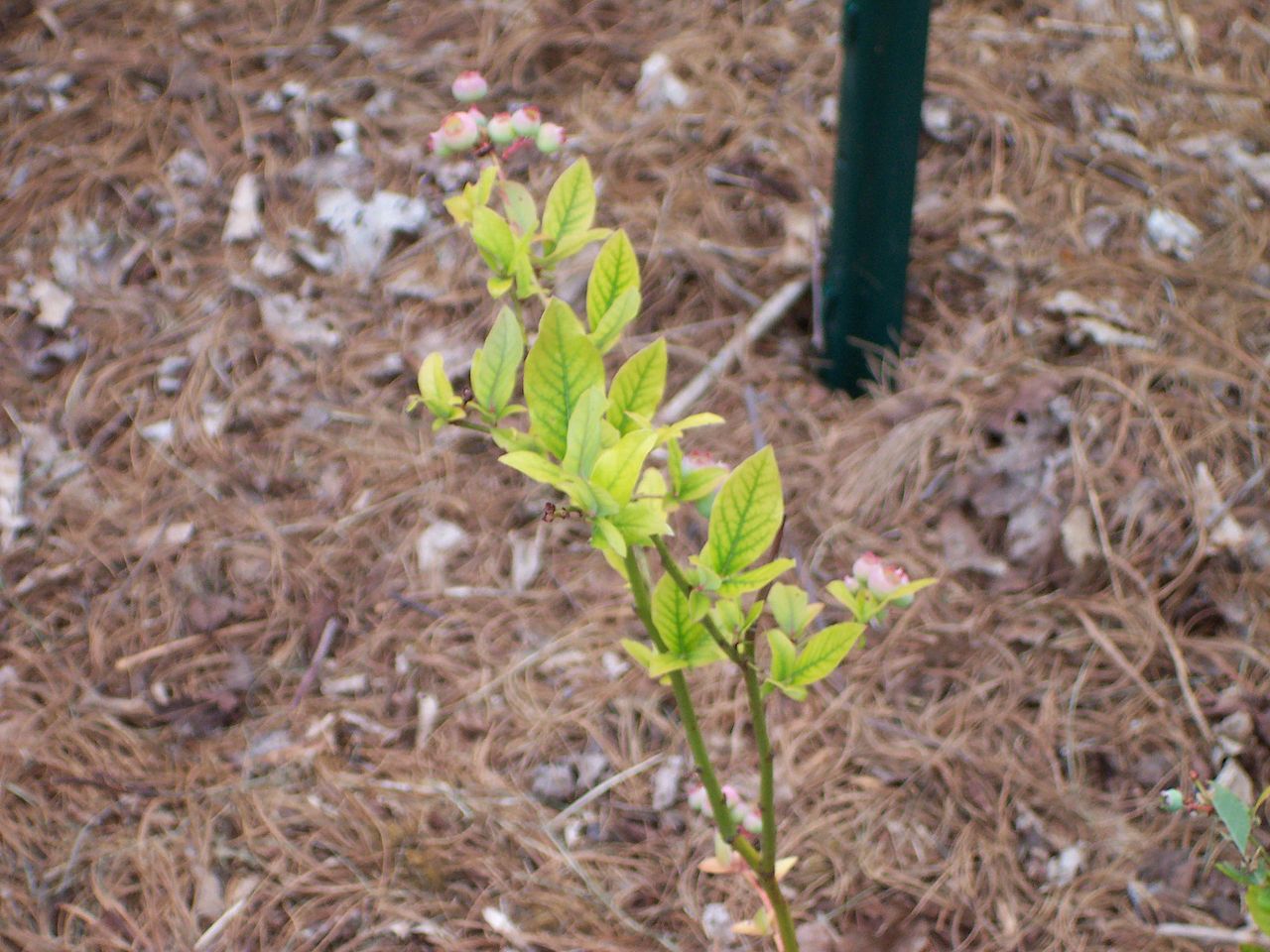Reasons For Blueberry Chlorosis – Tips On Blueberry Chlorosis Treatment


Chlorosis in blueberry plants occurs when a lack of iron prevents the leaves from producing chlorophyll. This nutritional deficiency is often the cause for yellow or discolored blueberry leaves, stunted growth, reduced yield, and in some cases, eventual death of the plant. Read on to learn what you can do about chlorosis in blueberry plants.
Reasons for Blueberry Chlorosis
What causes blueberry chlorosis? Most often, chlorosis in blueberry plants isn’t caused by a lack of iron in the soil, but because the iron isn’t available to the plant because the pH level is too high. In other words, the soil is too alkaline for healthy growth of blueberries. Alkaline soil is often present in areas where rainfall is low. Blueberries require a low soil pH, and chlorosis occurs when a high pH level binds up the iron in the soil. Although the optimum pH level may vary somewhat between different cultivars, a pH above 5.5 is often cause for chlorosis in blueberry plants.
Blueberry Chlorosis Treatment
The first step in blueberry chlorosis treatment is a soil pH test. Your local cooperative extension office may provide tests, or you can purchase a testing kit relatively inexpensively at a garden center. If leaves are looking puny, a foliar iron spray is a temporary fix that will get the plant through a rough patch while you are figuring out the next steps. Be sure the spray is marked “chelated” iron. Reapply the spray as new leaves appear. A longer-term solution involves application of sulfur to lower soil pH, and this is where things can get complicated. For example, method and rate of application will vary considerably if your soil is loam, sand, or clay. There are a number of products on the market, including powdered sulfur, pelleted sulfur, elemental sulfur, lime sulfur, aluminum sulfate and others. The best sulfur for blueberry chlorosis treatment depends on soil pH, soil type, moisture, timing and other factors. Your cooperative extension office will have plenty of fact sheets and other free information about blueberry chlorosis treatment in your area. In the meantime, there are other steps you can take to improve the situation for your blueberry bushes. However, none should be considered substitutes for correction with sulfur products.
- Water regularly, especially during dry periods.
- Mulch well with bark chips, pine needles, oak leaves, or other acidic materials.
- Fertilize regularly using a high-acid fertilizer.
.
Gardening tips, videos, info and more delivered right to your inbox!
Sign up for the Gardening Know How newsletter today and receive a free copy of our e-book "How to Grow Delicious Tomatoes".

A Credentialed Garden Writer, Mary H. Dyer was with Gardening Know How in the very beginning, publishing articles as early as 2007.
-
 Moody Blooms For Spring: 8 Types Of Black Flowers To Add Drama To Spring Displays
Moody Blooms For Spring: 8 Types Of Black Flowers To Add Drama To Spring DisplaysFrom midnight burgundies to inky violets, several types of black flowers can enrich and embolden a spring display. Try these brooding bloomers for a moody garden
By Tonya Barnett
-
 Can Snake Plants Live Outside? Everything You Need To Know For Snake Plants Al Fresco
Can Snake Plants Live Outside? Everything You Need To Know For Snake Plants Al FrescoSnake plants can live outside given the right conditions, but be careful that they don't take over! Learn the best way to use snake plants in your landscape.
By Mary Ellen Ellis